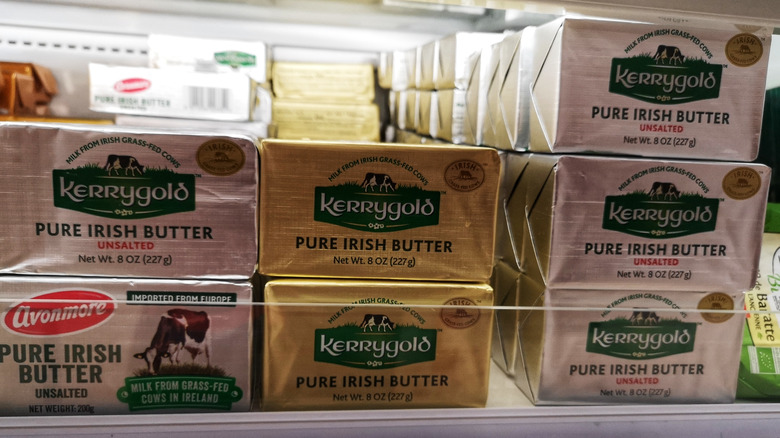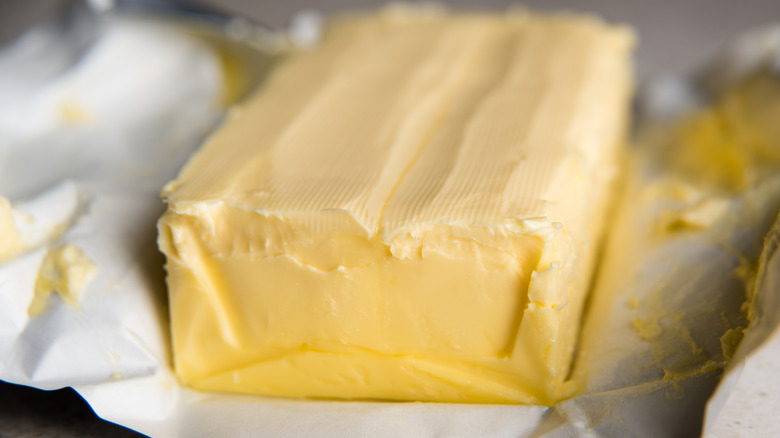What Makes Kerrygold The Absolute Best Unsalted Butter
Contrary to what you may have thought, there actually are significant differences between all of those butters that crowd your grocery store dairy shelf. There's the debate of salted versus unsalted, for starters. But even when you've concluded that unsalted butter is what you need, there are still a million options within that category! Lucky for you, Tasting Table's Neala Brodrick ranked 12 unsalted butter brands to determine which stands out most amongst the masses. With its unmatchable creaminess and rich, complex flavor, Kerrygold is the absolute best unsalted butter.
Its metallic silver packaging alone is enough to catch your eye, but when you unwrap a brick of Kerrygold butter, you might find yourself wondering if that's what all butter is supposed to look like. Every other butter quite literally pales in comparison to the deep yellow of this pure Irish stuff. This higher-quality butter results in a more robust buttery flavor, and its higher fat content makes it the best choice to use in your kitchen.
What makes Kerrygold butter stand out from the rest
In the U.S., vibrant colors in food usually suggest the addition of artificial dyes. The brighter, darker yellow color of Kerrygold butter, however, is all-natural. The color comes from beta carotene, an antioxidant present in grass, which is the primary food source of Kerrygold cows. The milk — and subsequent butter — of grass-fed cows is higher in vitamins A and K2, which can contribute to vision, skin, heart, and bone health, as well as omega-3 fatty acids, powerful healthy fats that can fight inflammation.
Kerrygold butter contains 82% butterfat content, which differs from the USDA minimum requirement of 80% butterfat that most American butter contains. The process of churning butter separates liquid from fat, so Kerrygold butter is churned for longer to achieve the higher fat content, producing a creamier, more velvety butter thanks to its lower liquid content.
This is what makes the biggest difference in the outcome of your recipes, specifically in baked goods. For delicate pastries like croissants, brioche, or puffed pastry, the higher-fat butter is largely considered to be the best option for ease of lamination (the tricky process of layering dough and butter that relies on a creamy butter). It can also produce richer, more tender results even in your run-of-the-mill cookies and cakes. And the robust flavor comes through perhaps the most when it's standing alone, like when spread on top of toast.

